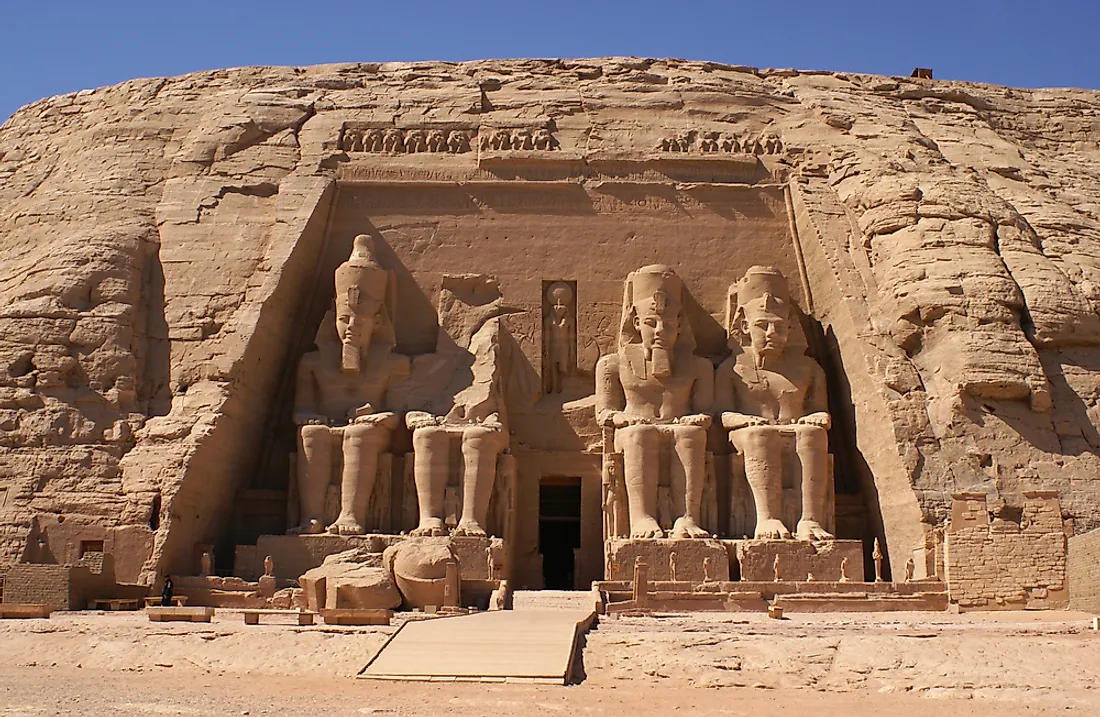Abu Simbel Temples - Historic Sites of Egypt

The Abu Simbel Temples are two rock temples located in Nubia, Egypt near the Sudan-Egypt border. The massive rock temples are a remarkable testament of ancient Egyptian civilization and were designated as UNESCO World Heritage Sites in 1979. Local legend has it that the temples were named after a local boy who led the first European explorers to the site in the early 19th century.
History Of The Abu Simbel Temples
The Abu Simbel Temples were constructed during the rule of Pharaoh Ramesses II in around 1264 BCE. The pharaoh commissioned the construction of the monuments as a commemoration of his victory against the Hittite Empire led at the ancient city of Kadesh during the Battle of Kadesh in May 1274 BCE. The temples were also meant to showcase Egyptian religious superiority to its neighbors. Archeologists and historians believe that it took 20 years to complete the temples which were dedicated to the Egyptian deities Ptah and Ra-Horakhty.
The Two Temples
The Abu Simbel temples are comprised of two massive temples, The Great Temple and The Small Temple. The Great Temple is the larger of the two temples with a height of 98 feet and 115 feet in length. The entrance features four huge statues, two on each side which resemble Pharaoh Ramesses II. Several smaller statues are also located on the entrance resembling the enemies defeated by the Pharaoh. The Great Temple’s interior is decorated with numerous engravings depicting the Egyptian victory against the Hittites. The Small Temple stands 40 feet in height and 92 feet in length and is dedicated to Queen Nefertari. The entrance to the temple features six massive colossi, four statues of Pharaoh Ramesses II and two of his queen Nefertari. The interior of the Small Temple is decorated with many engravings depicting the Pharaoh and his Queen making offerings to the Egyptian deities.
19th Century Rediscovery
After it was abandoned many centuries, the temples were buried in desert sand. In 1813 a Swiss explorer Burckhardt rediscovered the site of the temples and was reportedly led to the location by a young local boy known as Abu Simbel. While impressed, the Swiss did not have the capacity to excavate the temples and later informed fellow explorer Giovanni Belzoni of his discovery. Giovanni later traveled to the site in 1817 and excavated the sand from the temple (some historians believe Giovanni also looted the temples).
Relocation Of The Abu Simbel Temples
In the 1960s the Egyptian government began plans to construct the Aswan High Dam on River Nile. The resulting rising water levels led to a threat to the Abu Simbel Temples. An international campaign was subsequently launched to seek for funding to relocate the ancient temples. In 1964, a massive relocation operation was initiated and involved specialists drawn from many countries including archeologists, heavy machine operators, and engineers all who worked under the UNESCO banner. The operation involved placing the temples on high ground over 200 feet above the original site. The relocation process was on an unprecedented scale with the entire process costing over $40 million and involved the dismantling of the temples into 20-ton blocks and reassembling them. The relocation of the Abu Simbel Temples was completed in 1968.











